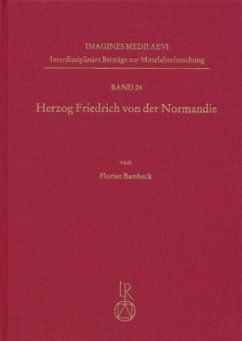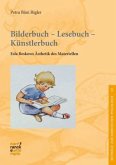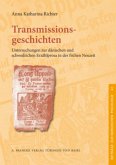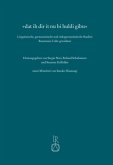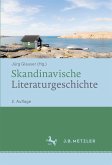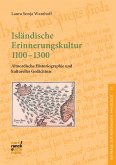Der altschwedische Ritterroman Hertig Fredrik av Normandie wurde um 1300 im Auftrag des norwegischen Königshauses nach einer deutschen Vorlage erstellt, die heute verloren ist. Beinahe zwangsläufig hat die deutsche Forschung, bis auf wenige Ausnahmen, diesen Text daher nicht zur Kenntnis genommen. Das vorliegende Buch versucht diesem Missstand abzuhelfen, indem es erstmals eine zeilengetreue vollständige Übersetzung des Texts bietet. Motivuntersuchungen zur zeitlichen und gattungstheoretischen Einordnung des postulierten Vorbilds Herzog Friedrich von der Normandie runden die grundlegende Ersterfassung dieses Texts für die deutsche Forschung ab.
Around 1300 the norwegian royal house ordered an unknown writer to translate a nowadays lost german source into the old swedish knight's tale "Hertig Fredrik av Normandie". Because of it being in old swedish, german scientific research tended to overlook the text. The book at hand tries to remedy this fact. It begins with an extensive overview of the scandinavian research to the "Hertig Fredrik av Normandie", whose source was, especially in the 19th century, heavily debated. The second part of the book presents the old swedish text in a german line by line translation, giving german readers for the first time in centuries access to the tale. The text was edited using microfilms of the so-called "Codex Verelianus" and was translated carefully following the swedish text as close as possible. The third part comprises a comparison of the swedish tale - and thus, its german source - with contemporary german literature. The assumed german source "_Herzog Friedrich von der Normandie" reveals itself to be closely connected to the arthurian romance, especially the texts created by Hartmann von Aue, such as "Iwein" or "Erec". Dwarves and giants are represented in it as well as a great tournament. But the similarities end there. The author sets the story in a post-arthurian era, where the arthurian court has ceased to exist and thus can no longer play its traditional role as center around which the story revolves. Using motives from classical arthurian romance, Brautwerbungsepik and german chanson de geste the author of "_Herzog Friedrich von der Normandie" has created a post-classical arthurian romance which already links to the uprising Minne- und Herrschaftsroman of the later 13th century. This new study dates the text around the year 1250 and hopes to have succeeded in setting the cornerstone for a future, more thorough analysis of the text.
Hinweis: Dieser Artikel kann nur an eine deutsche Lieferadresse ausgeliefert werden.
Around 1300 the norwegian royal house ordered an unknown writer to translate a nowadays lost german source into the old swedish knight's tale "Hertig Fredrik av Normandie". Because of it being in old swedish, german scientific research tended to overlook the text. The book at hand tries to remedy this fact. It begins with an extensive overview of the scandinavian research to the "Hertig Fredrik av Normandie", whose source was, especially in the 19th century, heavily debated. The second part of the book presents the old swedish text in a german line by line translation, giving german readers for the first time in centuries access to the tale. The text was edited using microfilms of the so-called "Codex Verelianus" and was translated carefully following the swedish text as close as possible. The third part comprises a comparison of the swedish tale - and thus, its german source - with contemporary german literature. The assumed german source "_Herzog Friedrich von der Normandie" reveals itself to be closely connected to the arthurian romance, especially the texts created by Hartmann von Aue, such as "Iwein" or "Erec". Dwarves and giants are represented in it as well as a great tournament. But the similarities end there. The author sets the story in a post-arthurian era, where the arthurian court has ceased to exist and thus can no longer play its traditional role as center around which the story revolves. Using motives from classical arthurian romance, Brautwerbungsepik and german chanson de geste the author of "_Herzog Friedrich von der Normandie" has created a post-classical arthurian romance which already links to the uprising Minne- und Herrschaftsroman of the later 13th century. This new study dates the text around the year 1250 and hopes to have succeeded in setting the cornerstone for a future, more thorough analysis of the text.
Hinweis: Dieser Artikel kann nur an eine deutsche Lieferadresse ausgeliefert werden.

